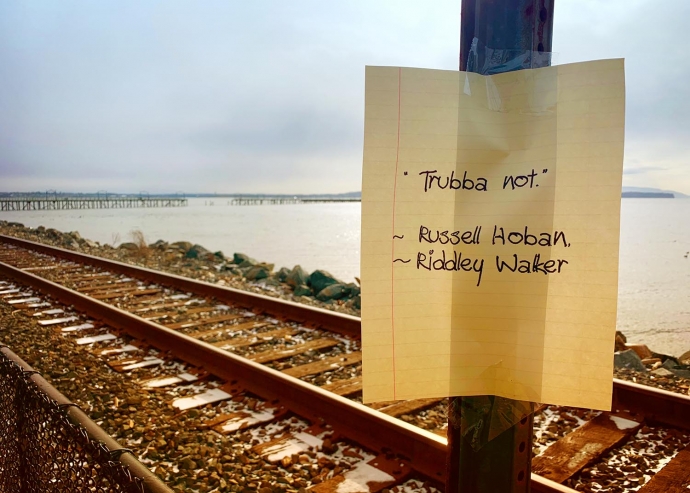The studio was two storeys high with a skylight; for a moment we stood in darkness looking up at the sky, then Roswell switched on two banks of fluorescent lights and there leapt into view a crucified crash-dummy. ‘Oh my God,’ I said. Up there on the cross it looked enormous at first but then I realised it was only life-size.
The cross was leaning against the wall as if the figure had just been nailed to it and raised up to hang there until dead. The figure was of pale wood, unpainted except for the usual black-and-yellow discs, the blood from the wound in its side and those in its hands and feet; there was also a little blood from the shiny chromium crown of thorns on its bald and eyeless head. The figure was more elongated than the dummies I’d seen in photographs and on television; this had an El Greco effect that accentuated the pain not visible on the blankness of the face. The cross was of a rough dark wood that heightened the pale vulnerability of the body. There was no INRI.
After the first shock a wave of sadness swept over me; my throat ached and my nose tingled and I thought I might cry but I didn’t. This sadness wasn’t from the crash-dummy Christ but from thinking of the poorness of spirit that had led Roswell to spend all those hours carving it. His soul must be absolutely skint, I thought, for him to come up with this. The reduction of Christ to a dummy made to crash into the wall of our sins, the stripping of a complex and haunting idea to a simplistic metaphor, made me so sorry for Roswell that my heart opened to him and I wanted to take him in my arms and rock him like a baby. I realised that I was standing there looking gobsmacked and I tried to find something to say.


The studio was two storeys high with a skylight; for a moment we stood in darkness looking up at the sky, then Roswell switched on two banks of fluorescent lights and there leapt into view a crucified crash-dummy. ‘Oh my God,’ I said. Up there on the cross it looked enormous at first but then I realised it was only life-size.
The cross was leaning against the wall as if the figure had just been nailed to it and raised up to hang there until dead. The figure was of pale wood, unpainted except for the usual black-and-yellow discs, the blood from the wound in its side and those in its hands and feet; there was also a little blood from the shiny chromium crown of thorns on its bald and eyeless head. The figure was more elongated than the dummies I’d seen in photographs and on television; this had an El Greco effect that accentuated the pain not visible on the blankness of the face. The cross was of a rough dark wood that heightened the pale vulnerability of the body. There was no INRI.
After the first shock a wave of sadness swept over me; my throat ached and my nose tingled and I thought I might cry but I didn’t. This sadness wasn’t from the crash-dummy Christ but from thinking of the poorness of spirit that had led Roswell to spend all those hours carving it. His soul must be absolutely skint, I thought, for him to come up with this. The reduction of Christ to a dummy made to crash into the wall of our sins, the stripping of a complex and haunting idea to a simplistic metaphor, made me so sorry for Roswell that my heart opened to him and I wanted to take him in my arms and rock him like a baby. I realised that I was standing there looking gobsmacked and I tried to find something to say.